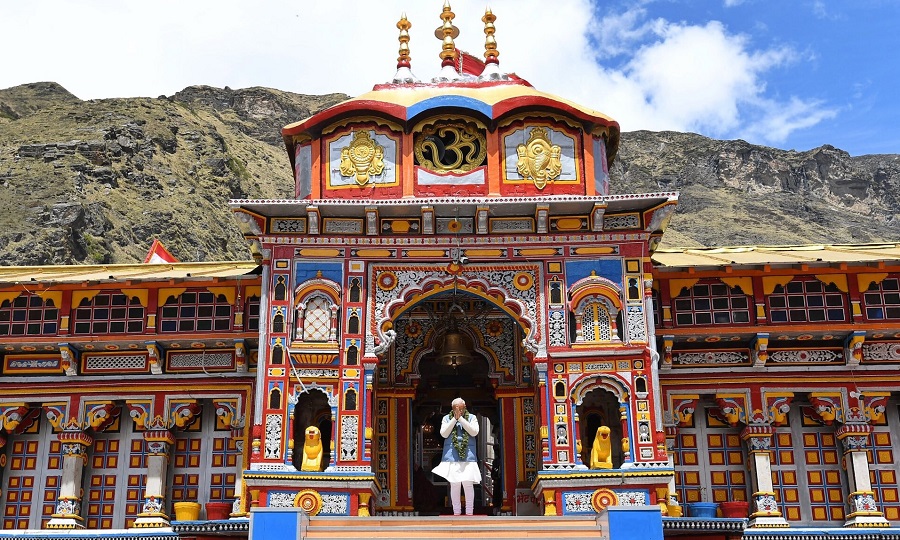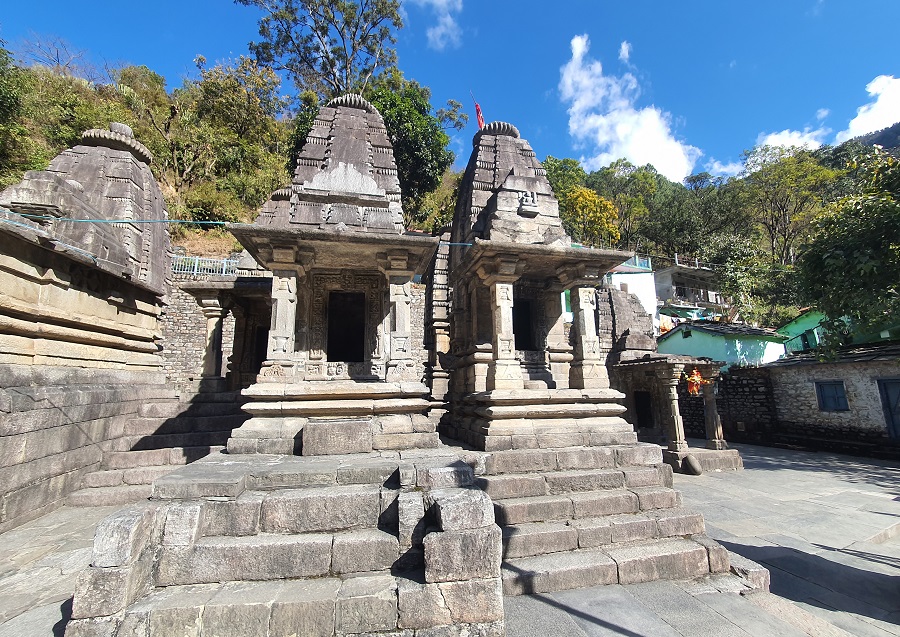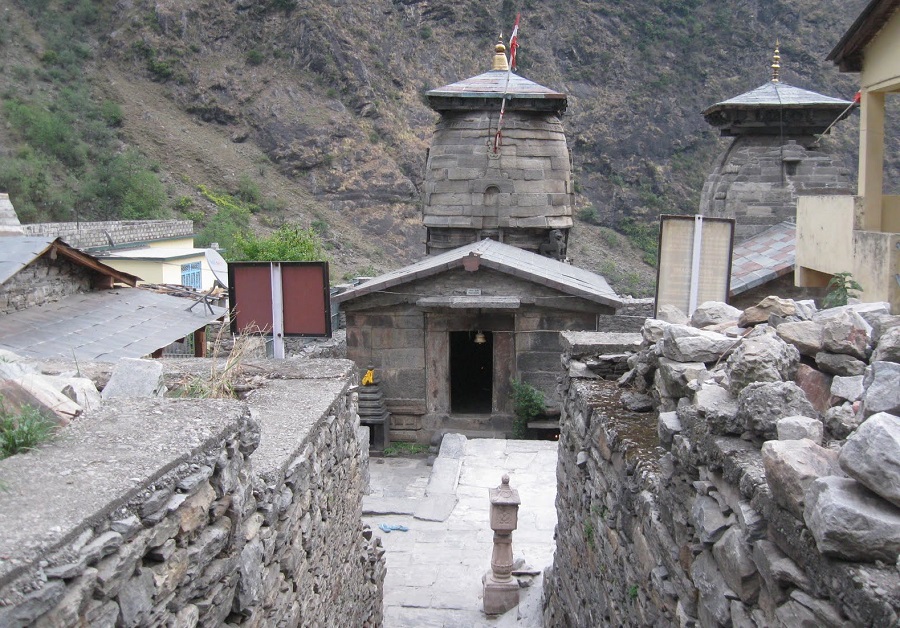Did you know that Badrinath, apart from being part of the two Chardham yatra circuits, also forms the integral crux of the renowned Panch Badri Yatra? Badrinath Temple hardly needs any introduction to those familiar with Devbhoomi of Uttarakhand. After all, the temple is cited as the most important of Vishnu temples in the whole universe in Puranas. No wonder it is with Badrinath that the two pilgrimages of Himalayan Char Dham and All-India Char Dham culminate. Lesser known is the other pilgrimage circuit the temple is part of - the Panch Badri Yatra. As the name suggests, Panch Badri comprises of five temples of Lord Vishnu in the Himalayas.
A visit to the Panch Badri temples is highly recommended in Vaishnavite traditions. A visit to the temples not just brings one closer to the inner Divinity that dwells within all our hearts, but also makes one realize the intimate associations of the land and its mythology with the spiritual centre at the heart of each temple. Before we know further about each of the Panch Badri Temple, let us enlighten ourselves with the legend that forms common link among all Panch Badri Temples.
Legend behind Panch Badri
If River Bhagirathi is celebrated for her association with Lord Shiva, River Alaknanda has some deep-rooted association with Lord Vishnu. Between the origins of the river at Satopanth and her merger with Nandakini River at Nandaprayag, the land is venerated as ‘Badrikshetra’. Of the many Vishnu temples the region is filled with, five are considered particularly sacred and forms together Panch Badri pilgrimage. An interesting legend exists behind Panch Badri. The twin incarnate forms of Vishnu, Nar-Narayan, are said to have wandered the land in search of an ideal place for their spiritual practices. They are said to have meditated at the site of each of these temples for a while. Upon reaching the site presently marked by Badrinath Temple, they realized they have come upon the divinely chosen site that would provide the ideal base for their spiritual austerities.
The holy men performed spiritual practices meant to bring in the highest spiritual good to all living beings for thousands of years upon the banks of Alaknanda. This supreme act of selfless spiritual service rendered the sacred land even holier, and earned it the honor of being a highly acclaimed spiritual refuge in the later eras. Also, the land is said to have been once lined with Badri trees. Even though the trees have long left its landscape, the name of the region still carries remnants of that age.
The Five Badris or ‘Panch’ Badris
Badrinath Temple (Badri Vishal)
The prime of all the temples of Panch Badri is located at Badrinath. Badrinath Dham is also referred to as Vishal Badri Temple. Temple mythology cites that the idol of Vishal Badri was discovered from a recess in Alaknanda River called Narad Kund. The discovery and enshrinement of the deity is attributed to Adi Shankaracharya. Badrinath Temple is also counted as one among the revered 108 Divya Deshams of Lord Vishnu. Divya Deshams are renowned Vaishnavite shrines that are expounded in the works of Alvar saints.
Located at a stupendous height of 3133 m above sea level, Badrinath Dham falls within the terrain of Chamoli district of Uttarakhand. The main idol of the temple is that of Lord Vishnu resting in meditative pose. There are over 15 idols of other Gods and Goddesses also in the temple. The present architectural edifice of the temple is constructed by Garhwal kings nearly two centuries before.
Many legends surround the conception of the temple. One such legend cites that the region was previously a favored abode of Lord Shiva and Goddess Parvati. Once, Lord Vishnu took the guise of a wailing and won the affections of Maa Parvati. Afterward, he refused to budge from the seat of Lord Shiva which he playfully usurped while the couple was away. This lead to Lord Shiva moving onto the neighbouring terrain of Kedarnath, leaving Badrinath vacant for Lord Vishnu.
Adi Badri
The first of the Panch Badri temples, Adi Badri, is located 17 kilometres from Karnaprayag, near Chulakot. It is said to be the temple where Vishnu devotees prayed during the winter when Badrinath became inaccessible. Adi Badri is a temple complex believed to have been founded by Adi Shankaracharya. Between the 5th and 8th centuries AD, the Gupta rulers constructed seven temples in this complex. The main temple of the complex is dedicated to Lord Vishnu and is built on a raised platform with a small enclosure shaped like a pyramid. A black stone image of Vishnu holding a mace, lotus, and chakra can be found in the temple. According to Hindu scriptures, when Bhavishya Badri attains the status of Badrinath in the future, this temple will be named Yogi Badri.
Many believe that it is the temple where Lord Vishnu devotees pray during the winter when Badrinath is inaccessible. The sage Adi Shankaracharya is said to have founded Adi Badri. Gupta rulers built seven temples in the complex between the 5th and 8th centuries AD. The idol in the main temple is made of black stone and holds a mace, a lotus, and a chakra. This Lord Vishnu temple, built during the Gupta period, is significant both religiously and historically. Its black stone Lord Vishnu idol and pyramidal shaped platforms made it very popular with the general public.
Vridha Badri
One of the Panch Badris, this holy Vishnu temple is located in Animath Village, which is only 7 kilometres from Joshimath. At Vridha Badri, Lord Vishnu is said to have appeared in the form of an old man before sage Narada, who performed penance here. As a result, the presiding deity of the temple is also an elderly man. It is also thought that before Badrinath was designated as a Chardham, Vridha Badri was where Vishkarma's idol was enshrined and worshipped. This is also the only temple in the Panch Badri that is open to pilgrims all year. According to legend, Lord Vishnu appeared as an old man in front of divine sage Narada and performed penance here. As a result, the shrine's main deity is an elderly man. It is the Panch Badri's only temple that is open all year. Virdha Badri is in the Chamoli district of Uttarakhand, near Animath.
The Vridha Badri Temple was constructed in India during the reign of the Gupta Dynasty. The Vridha Badri is one of the "Sapta Badri" temples of Badrikshetra. The Vridha Badri holds a very high significance in the Hindu mythology. The name of Vridha Badri is derived from the form of an old man in which Lord Vishnu is worshiped here. It is situated ahead of the Kalpeshwar Mahadev Temple, ahead of Helang. The elevation of Vridha Badri is of 1,380 m in Animath.
Bhavishya Badri
A location near Joshimath is frequently predicted to be the future Badrinath. When evil spreads throughout the world, legend has it that the Nar and Narayan mountains will be blocked, rendering Badrinath inaccessible. Lord Vishnu is worshipped here in the form of Narasimha. The only way to get to the temple is on foot because there are no roads leading there. It is also closed in the winter and reopens with the Badrinath temple in the spring. The temple of Lord Vishnu is dedicated to His future incarnation as the Lion-headed God, or Lord Narsingh.
The name of the temple is based on a future prediction of a landslide blocking the road when the right arm of the Narsingh idol in Joshimath falls down. This temple has enormous mythological significance, and pilgrims who visit can experience religious supremacy. Bhavishya Badri is one of the Panch Badri temples, located at a height of 2744 metres near Joshimath. Bhavishya Badri is 17 kilometres from Joshimath in Subhain Village. The deity of this small temple, which is known to be the future seat of Badrinath, is Lord Vishnu. There is a beautiful water spring and many Cedar trees in Bhavishya Badri.
Yogdhyan Badri
Yogdhyan Badri is located in Pandukeshwar Village, a short distance from Hanuman Chatti and Govind Ghat. The deity of Lord Vishnu presides here in a meditation pose, giving rise to the name Yogdhyan. Pandukeshwar is located at 1,920 m and is named after Pandu, the father of the Pandvas. Yogdhyan Badri is also thought to be the winter home of Badrinath's Utsava-Murti (festival-image), when the main temple is closed. It is also said that a pilgrimage tour is incomplete unless prayers are offered at this location.
According to legend, King Pandu performed penance in Pandukeshwar and asked Lord Vishnu to cleanse him of the sin of killing the two mating deer, who had previously been ascetics. It is also said that King Pandu erected a bronze statue of Lord Vishnu here, and that the Pandavas were born and King Pandu died here. The Pandavas are also said to have come here to repent after defeating the Kauravas in the Mahabharata war.










